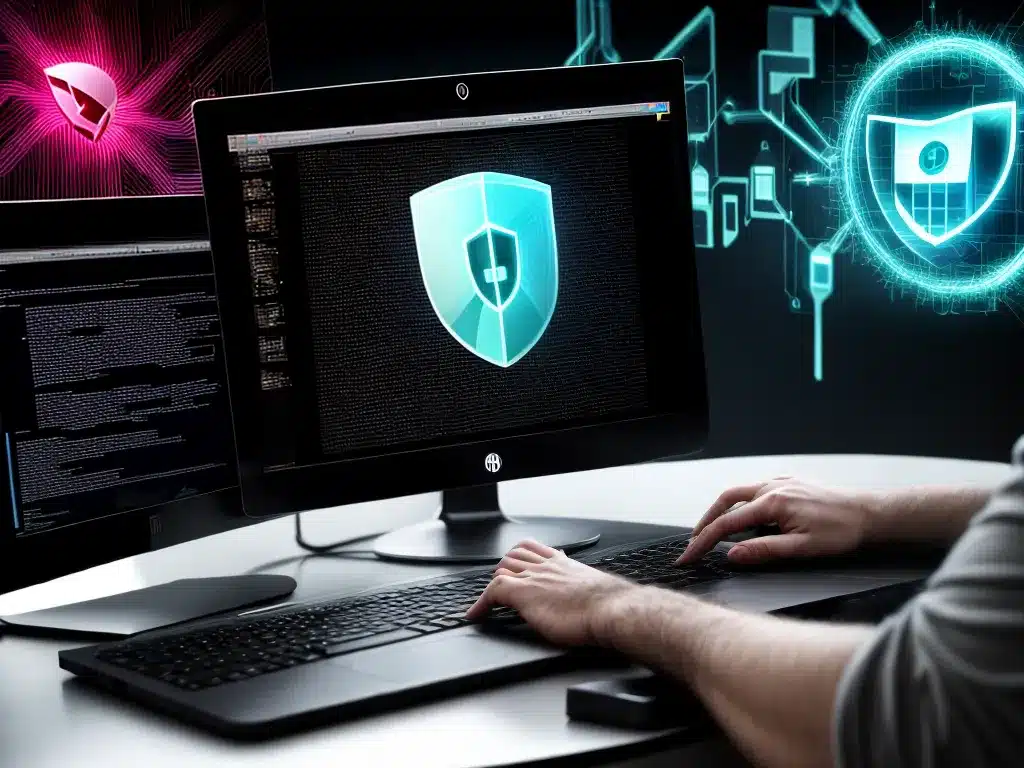What is Keylogging Malware?
Keylogging malware is a type of malicious software designed to secretly monitor and record everything you type on your keyboard. It logs all keystrokes, including passwords, credit card numbers, private messages, and other sensitive information.
Keyloggers work by installing themselves onto a victim’s device and running in the background without the user’s knowledge. They can be delivered through various vectors:
- Downloading malware from unsafe websites, links, or attachments. Keyloggers are often bundled with other malware.
- Drive-by downloads that install keyloggers simply by visiting a compromised website.
- Social engineering that tricks users into installing fake apps or programs containing keyloggers.
Once installed, keyloggers silently record all keystrokes and send the stolen data back to cybercriminals. The logged keystrokes are used for identity theft, financial fraud, corporate espionage, and other malicious activities.
How Do You Detect Keylogging Malware?
There are several signs that may indicate keylogging malware on your device:
1. Sluggish Keyboard Response
Keyloggers can slow down keyboard input and response times. If you notice typing and general computer speeds lagging, it could point to a keylogger hogging system resources in the background.
2. Unknown Programs Running
Carefully check all currently running programs and processes. Keyloggers often disguise themselves under innocent sounding process names. Look for any unknown or suspicious programs.
3. Odd Activity on Online Accounts
If you experience unauthorized access, password changes, or transactions on your online accounts, it may be a sign of stolen credentials from a keylogger. Always use strong unique passwords for each account.
4. Antivirus Warnings
Many keyloggers trip antivirus alerts. Pay close attention to any malware detection notifications from your antivirus software. Immediately scan your device if you see a warning.
5. Strange Network Traffic
Keyloggers need to transmit logged data back to attackers. This generates unusual outbound network activity. Monitor your network traffic for odd connections, especially to foreign IP addresses.
6. Unusual Spiking of CPU/RAM Usage
Keyloggers consume additional system resources to monitor keyboard input in real-time. Check for any applications causing CPU usage to spike abnormally high.
How to Remove Keylogging Malware
If you suspect a keylogger infection, take these steps to remove it and prevent further damage:
- Run a full system scan with updated antivirus software to detect and quarantine any keylogger malware.
- Update all software to patch vulnerabilities leveraged to install the keylogger.
- Change all account passwords from a clean device to revoke access by attackers. Prioritize financial accounts and email passwords first.
- Notify contacts about potential messages/emails sent from your compromised accounts.
- Check browser extensions and remove any unknown/suspicious add-ons.
- Back up files and reformat hard drives to completely eliminate lingering keylogger infections.
- Enable two-factor authentication wherever possible to enhance account security.
Stay vigilant for suspicious activity moving forward. Keyloggers tend to reinfect devices if precautions are not taken.
How to Prevent Keylogging Infections
Here are some best practices to help prevent keylogging malware:
- Install comprehensive antivirus software and keep it updated.
- Avoid downloading files or programs from unverified sources. Stick to official app stores.
- Carefully inspect email attachments before opening them.
- Turn off macros in document files from untrusted senders.
- Beware of phishing attempts and do not click suspicious links.
- Use a popup blocker and ad blocker in your browser.
- Only install browser extensions from trusted sources.
- Regularly update and patch all your software.
- Use strong passwords and enable two-factor authentication where possible.
- Carefully monitor accounts for unauthorized access.
- Limit use of public computers where keyloggers are more likely to be installed.
Staying vigilant about good cyber hygiene practices will help deter sophisticated keylogging malware from compromising your sensitive data.












